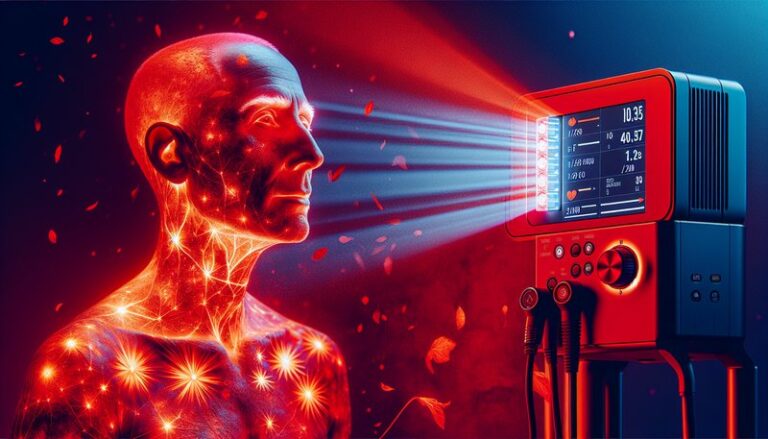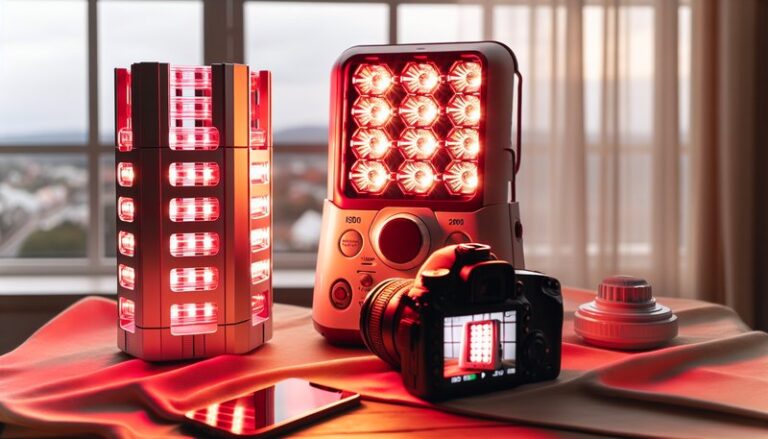How Deep Does Red Light Therapy Go?
Is red light therapy just skin-deep or does it penetrate the body more effectively?
Red light therapy (RLT) has gained popularity for its numerous health benefits, but many people wonder just how deep this therapy can truly reach. This article will explore the depth and effectiveness of red light therapy, its benefits, considerations before use, alternatives, and whether it’s recommended for broader applications.
Key Takeaways
- Red light therapy can penetrate tissues up to 2-5 centimeters, depending on several factors, including wavelength and skin type.
- The therapy promotes cellular regeneration and healing through increased ATP production.
- RLT is considered safe and non-invasive, with various therapeutic benefits, though it’s essential to understand its limitations.
What is Red Light Therapy?
Red light therapy is a form of low-level laser therapy (LLLT) that utilizes specific wavelengths of light, predominantly red and near-infrared, to stimulate cellular processes in the body. It is primarily used for skin conditions, pain relief, and enhancing overall wellness.
Red light therapy works by emitting light energy that is absorbed by the mitochondria within cells. This process enhances ATP (adenosine triphosphate) production, which is essential for energy transfer in cells. The therapy is used in various settings, including dermatology clinics, physiotherapy, and even at-home devices, showcasing its versatility and efficacy.
What are the Benefits of Red Light Therapy?
Red light therapy offers an array of benefits that make it appealing for both aesthetic and health reasons. Here’s a closer look at some of the primary advantages.
Enhanced Healing and Recovery
RLT has been shown to accelerate tissue repair and reduce inflammation. Studies suggest that it can promote wound healing, making it beneficial after injuries or surgeries. Athletes often utilize this therapy to speed up recovery time.
Skin Health and Aesthetics
RLT can improve skin conditions such as acne, eczema, and psoriasis. It also stimulates collagen production, helps reduce fine lines and wrinkles, and enhances overall skin texture and tone, leading many to incorporate it into their skincare regimen.
Pain Relief and Reduced Inflammation
Red light therapy can alleviate chronic pain associated with conditions like arthritis and musculoskeletal pain. By reducing inflammation and enhancing circulation, it can provide practical relief without the side effects linked to pharmaceuticals.
Mood and Sleep Improvement
Emerging research indicates that red light therapy may influence mood regulation and sleep quality. By potentially helping to balance circadian rhythms, it can contribute positively to mental wellness.
Is it Possible for Red Light Therapy to Reach Deeper Tissues?
Red light therapy can penetrate the skin to varying depths, typically between 2-5 centimeters. How deep it penetrates depends on several factors including:
Don’t miss Duration of Red Light Therapy?
- Wavelength: Different wavelengths can penetrate tissues to different extents. Generally, infrared light penetrates deeper than red light.
- Skin Type: Skin pigmentation and thickness can affect how deeply the light penetrates. Thicker or darker skin may absorb light more than lighter skin tones.
- Treatment Settings: Parameters such as light intensity, duration, and the angle of application can also influence penetration depth.
What are the Advantages of Deeper Penetration?
- Increased Therapeutic Effects: Deeper penetration can lead to more significant physiological changes, enhancing the benefits, especially for pain management and inflammation.
- Improved Accessibility for Muscle and Joint Issues: For individuals suffering from deeper tissue ailments, deeper penetration means more effective treatment options.
What are the Disadvantages of Deeper Penetration?
- Increased Complexity: Deeper penetration might require more sophisticated equipment, such as lasers, which can be more expensive and less accessible than LED devices.
- Potential for Overheating: If light penetrates too deeply without proper regulation, it could lead to localized overheating and discomfort.
What are the Things to Consider Before Trying Red Light Therapy?
Before starting red light therapy, it’s essential to consider several factors to ensure effective and safe treatment.
Skin Sensitivity
Individuals with sensitive skin or certain medical conditions should consult with a healthcare provider before beginning RLT, as it may exacerbate specific skin issues.
Equipment Quality
Not all red light therapy devices are created equal. Investing in a high-quality device designed to emit the correct wavelengths is crucial for achieving desired results.
Frequency and Duration
Establishing the frequency and duration of therapy sessions tailored to your individual needs is vital for efficacy. Overuse can lead to diminishing returns or adverse effects.
What are the Alternatives to Red Light Therapy?
Exploring alternatives to red light therapy can provide various options for those seeking similar benefits.
Infrared Saunas
Infrared saunas utilize heat to penetrate the body and improve circulation, promote detoxification, and alleviate tension. They offer many of the same benefits as RLT but through different mechanisms.
Cryotherapy
Cryotherapy involves exposure to extremely cold temperatures to reduce inflammation and pain while promoting recovery. It’s an alternative healing method that might appeal to those looking for different modalities.
Topical Treatments
Several topical treatments, such as creams and serums containing active ingredients like retinoids or hyaluronic acid, can promote skin health. These can complement RLT or serve as standalone options.
Conclusion: Is it Recommended to Try Red Light Therapy?
Considering its safety, versatility, and multitude of benefits, red light therapy is worth exploring for those seeking improved skin health, pain relief, and overall wellness. However, it is essential to understand its limitations and consult with a healthcare professional before beginning treatment to ensure it aligns with personal health needs.
See the whole article Red Light Therapy and Blood Pressure?
Frequently Asked Questions
How Often Should I Use Red Light Therapy?
The frequency of use can vary based on individual needs, but many recommendations suggest 2-3 times per week for general health benefits. It’s best to consult with a provider for personalized guidance.
Can Red Light Therapy Help With Hair Loss?
Some studies suggest that red light therapy can stimulate hair growth in individuals experiencing androgenetic alopecia or other types of hair loss. Consistent use may yield beneficial results.
Is Red Light Therapy Safe for All Skin Types?
Generally, red light therapy is considered safe for all skin types, but individuals with certain skin conditions should consult their healthcare provider before trying it.
Can Red Light Therapy Replace Medical Treatments?
While red light therapy can complement medical treatments, it should not be viewed as a replacement for necessary medical care. Always consult with a healthcare provider for serious conditions.






